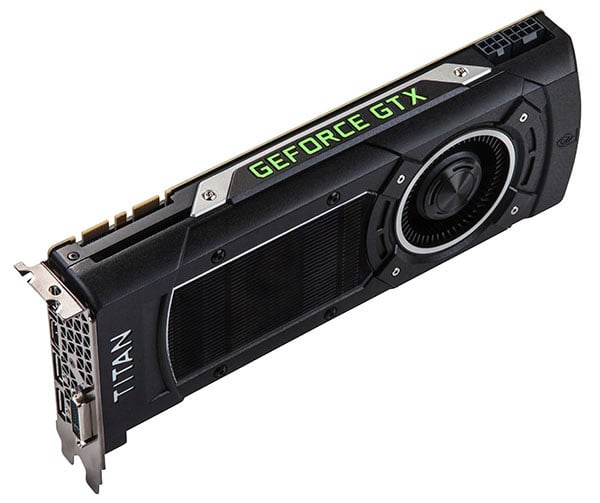Our Aim
To provide you with an overview on New And existing technologies, hopefully helping you understand the changes in the technology. Together with the overviews we hope to bring topical issues to light from a series of independent reviewers saving you the time And hassle of fact finding over the web.
We will over time provide you with quality content which you can browse and subscribe to at your leisure.
TekSpek 's

NVIDIA GeForce GTX TITAN X
Date issued:
Titan X, ready for deployment
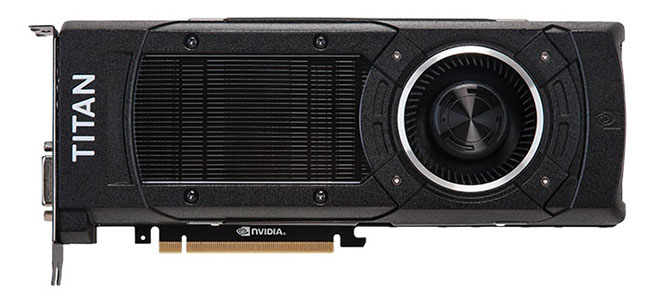
Nvidia's GeForce GTX 980, launched in September 2014, has held top spot in the single-GPU performance stakes for the past six months. AMD's Radeon 300-series riposte has yet to materialise, and though the rumours suggest that Team Red's response is imminent, Nvidia isn't resting on its laurels and is out to extend its performance advantage with the new GeForce GTX Titan X.
Finished in black and dressed to impress, the new card retains the familiar aesthetic that has adorned most high-end Nvidia cards in recent years. Build quality and design are excellent, but of course it's the debut of the underlying GM200 die that makes Titan X sing out to the hearts and minds of enthusiasts.
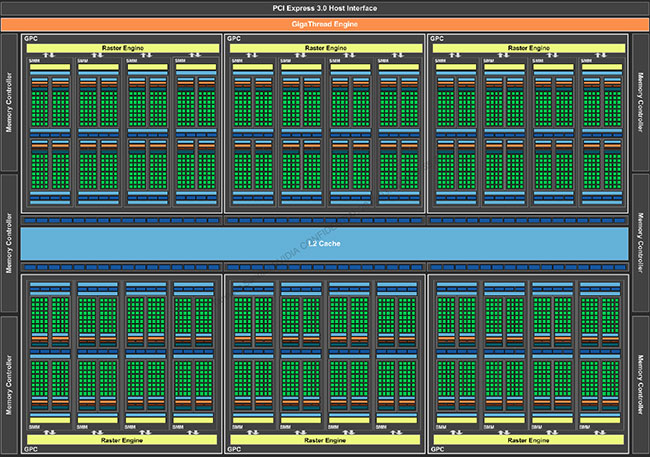
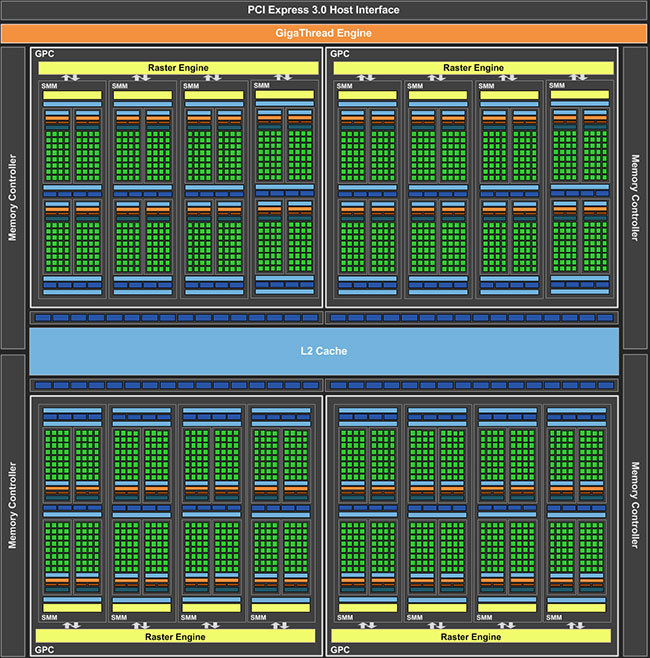
Built on a 28nm process and packing a staggering eight-billion transistors, the Maxwell-based die measures 601mm² and is able to pack enough technology to make a GTX 980 appear relatively meek.
Comparing both die side by side (GM200 on the left, GM204 on the right), we can see that the 51 per cent increase in size has paved the way for a further eight SM units, taking the total to 24. This configuration provides 3,072 processors, 192 texture units and 96 ROPs - 50 per cent more than GTX 980 on all counts.
Nvidia GeForce GTX Titan X (12GB) |
Nvidia GeForce GTX 980 (4GB) |
Nvidia GeForce GTX 780 Ti (3GB) |
Nvidia GeForce GTX Titan (6GB) |
|
|---|---|---|---|---|
| Launch date | March 2015 |
September 2014 |
May 2013 |
Feb 2013 |
| Codename | GM200 |
GM204 |
GK110 |
GK110 |
| Process (nm) | 28 |
28 |
28 |
28 |
| Transistors (mn) | 8,000 |
5,200 |
7,080 |
7,080 |
| Approx Die Size (mm²) | 601 |
398 |
551 |
551 |
| Full implementation of die | Yes |
Yes |
Yes |
No |
| SM Units | 24 |
16 |
15 |
14 |
| Processors | 3,072 |
2,048 |
2,880 |
2,688 |
| Texture Units | 192 |
128 |
240 |
224 |
| ROP Units | 96 |
64 |
48 |
48 |
| Peak GPU Clock/Boost (MHz) | 1,076 |
1,216 |
928 |
876 |
| Peak GFLOPS (SP) | 6,611 |
4,981 |
5,345 |
4,709 |
| Peak GFLOPS (DP) | 207 |
156 |
223 |
1,570 |
| Memory Clock (MHz) | 7,012 |
7,012 |
7,012 |
6,008 |
| Memory Bus (bits) | 384 |
256 |
384 |
384 |
| Max bandwidth (GB/s) | 336 |
224 |
336 |
288 |
| Default memory size (MB) | 12,288 |
4,096 |
3,072 |
6,144 |
| Power Connectors | 8+6-pin |
6+6-pin |
8+6-pin |
8+6-pin |
| TDP (watts) | 250 |
165 |
250 |
250 |
| GFLOPS per watt | 26.44 |
30.19 |
21.38 |
18.83 |
| Launch MSRP | $TBC |
$549 |
$699 |
$999 |
Continuing the more-is-better theme, the memory bus is widened to 384-bits, and ... wait for it ... a gargantuan 12GB GDDR5 frame buffer has been attached for good measure. Despite the meaty specification, Maxwell's efficiency keeps TDP at 250W (matching 2013's original Titan), resulting in straightforward air cooling and a simple 6+8-pin power requirement.
Titan X is a GPU that any extreme gamer would envy, though as you might expect, this amount of extravagance does have an adverse effect on price, which at launch is set at a lofty $1,349 US. And don't think of Titan X as a professional Quadro card on the relatively cheap - Nvidia has purposely stifled the card's double-precision ability, making it a gaming solution first and foremost.
Performance, Power Consumption and Overclocking
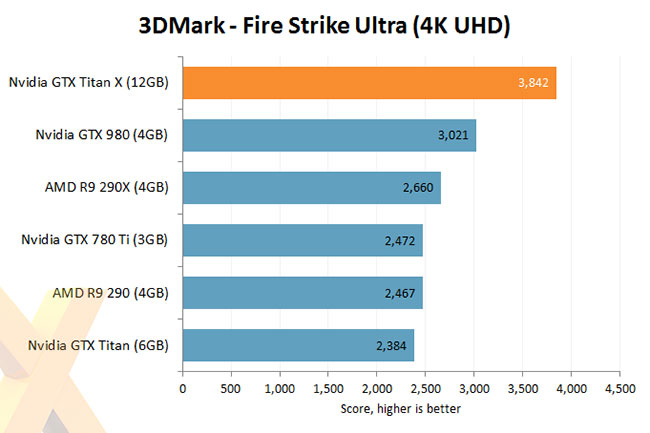
No surprises here, right? As far as single-GPU graphics cards are concerned, the GTX Titan X is in a league of its own, and pulls out a commanding lead over GTX 980 in 3DMark's most demanding benchmark. A new standard for 4K gaming has been set.
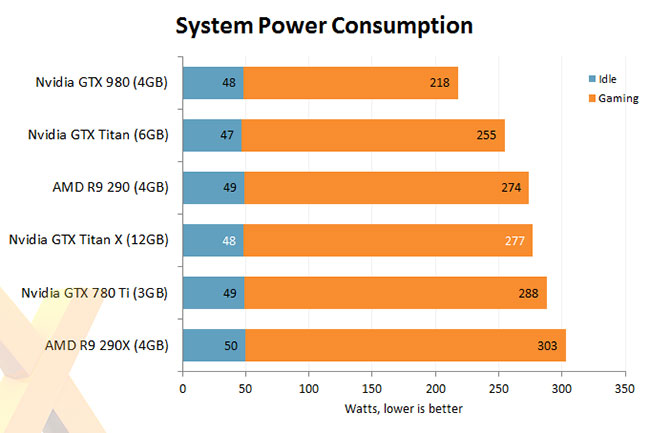
The efficiency of the Nvidia Maxwell architecture is also clear to see. Benchmarks from leading review sites show that while Titan X is 55 per cent faster than a GeForce GTX 780 Ti, it consumes up to 10 per cent less power - an admirable combination for a modern-day GPU.
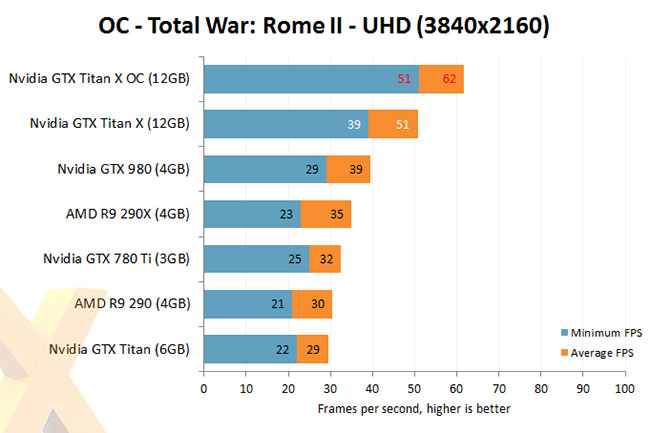
Is there further frequency headroom available? Absolutely. Nvidia's out-the-box Titan X clock speeds can be considered conservative. As evidenced by the above graph, users who are keen to overclock will find it relatively easy to increase Titan X performance to the tune of a further 20 per cent.
Summary
While the existing GeForce GTX 980 and GTX 970 have impressed, there has always been a sense that Nvidia has plenty left in the tank, and that the full performance potential of the Maxwell architecture has yet to be unleashed.
That changes with the launch of the all-singing, all-dancing GeForce GTX Titan X, a $1,349 graphics powerhouse that quite easily takes the crown of world's fastest single-GPU graphics card. 8-billion transistors, 3,072 processors and 12GB of memory are every bit as excessive as the price tag, but if you must have the best that money can buy, look no further than the NVIDIA GeForce GTX Titan X.
